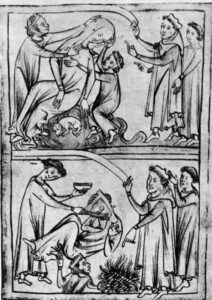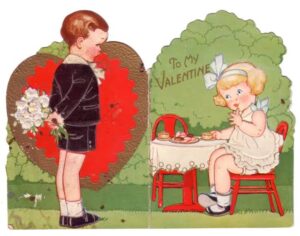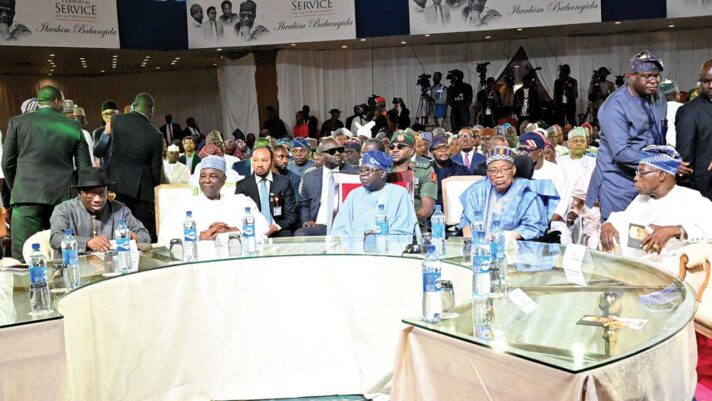What if I told you that the sweet, heart-shaped cards and bouquets of roses we exchange every February 14th had their origins in ancient rituals of sacrifice and fertility? That’s right—Valentine’s Day, a holiday celebrated worldwide as a day of love, has an incredibly fascinating and somewhat shocking history. How did it transform from the chaotic, ritualistic festival of Lupercalia into the romantic and commercialized day we know today? Buckle up, because the story involves bloody sacrifices, secret marriages, and more twists than a romantic drama.
THE WILD BEGINNINGS: LUPERCALIA, THE FERTILITY FESTIVAL

It’s February 15th, somewhere around 500 B.C., and the streets of ancient Rome are filled with noise and chaos. The air smells of freshly slaughtered goats and dogs, and young men, wearing nothing but the hides of these animals, are sprinting through the streets, striking women with strips of the bloody skins. This isn’t some nightmare—this is the festival of Lupercalia.
Lupercalia was a wild Roman festival held in mid-February, originally meant to ward off evil spirits and bless people with fertility. The Romans celebrated the feast in honor of the she-wolf, the symbol of the legendary founders of Rome, Romulus and Remus. But the rituals were anything but serene. Priests, known as Luperci, would sacrifice goats and dogs, smear their blood on themselves, and then run through the city, whipping both women and men with strips of the animal skin. The idea was that this would promote fertility, ease childbirth, and ensure good health for the coming year.
To modern sensibilities, it may sound shocking, even barbaric. But to the Romans, it was a sacred and vital part of life. Women, it was believed, would be more fertile after the event, and some even prayed to be struck by the Luperci for the blessing of children. It was a time of chaos, spontaneity, and, yes, a little romance.
THE TURNING POINT: THE CHRISTIAN INFLUENCE

But the wild frenzy of Lupercalia wouldn’t last forever. As Christianity spread across the Roman Empire, there was a movement to eradicate pagan festivals, and Lupercalia was no exception. In the late 4th century, Pope Gelasius I sought to replace the ancient festival with a more Christian observance.
Here’s where the first mystery unfolds. To Christianize the festival, the Pope turned to Saint Valentine, a priest who lived during the reign of Emperor Claudius II. Legend has it that Valentine defied the emperor’s ban on marriages for young soldiers, secretly marrying couples in love. For this act of defiance, Valentine was imprisoned and eventually executed on February 14th. The Pope, in his attempt to replace Lupercalia, declared this day in honor of St. Valentine. The bloody rituals were gone, but the idea of love—and possibly the pairing of lovers—remained.
However, this shift didn’t entirely quench the festival’s wild spirit. Valentine’s Day, still linked to romance, slowly began to take root as a time for lovers to express their affection. But it wasn’t until much later that the true transformation began.
THE VICTORIAN TWIST: CARDS, FLOWERS, AND HEARTFELT MESSAGES

Fast forward to the 14th century. In the courts of France and England, the concept of courtly love took hold, with poets like Geoffrey Chaucer writing about the idea of love on Valentine’s Day. But it wasn’t until the 19th century that the modern form of the holiday began to take shape.
During Victorian England, Valentine’s Day became a time for couples to exchange handwritten love letters and poems. The romanticized idea of love, combined with advancements in printing technology, led to the creation of the first mass-produced Valentine’s Day cards. These cards were far from the modern versions we know today, but they were the seeds of what would later become a major commercial holiday.
As the years passed, the holiday blossomed into something even more widespread, thanks in part to the rise of the greeting card industry. By the early 20th century, businesses began to realize the potential for profit. Hallmark and other companies began churning out cards, chocolates, and flowers, turning Valentine’s Day into a consumer-driven phenomenon.
THE MODERN-DAY LOVE MACHINE: ROMANCE FOR SALE

Today, Valentine’s Day has become the commercial juggernaut we know, with people around the world spending billions on gifts, flowers, chocolates, and dinners. The days of animal sacrifices and fertility rites are long gone, replaced by the giving of sweet tokens of affection. It’s a time when love is celebrated in all its forms, from romantic relationships to friendships and even self-love.
But the true question remains—what happened to the chaotic, rebellious energy of Lupercalia? In many ways, the wildness of that ancient festival still lingers beneath the surface of modern Valentine’s Day. The excitement, the unpredictability, the drive to connect—it’s all still there, albeit in a far more polished form. Beneath the glossy paper and red roses, the essence of the festival is alive and well: the need to feel seen, to express love, and to celebrate the wild, untamed energy that love can bring.
CONCLUSION: FROM LUPERCALIA TO LOVERS
Valentine’s Day’s evolution from the raucous Lupercalia to a day of romantic gestures is one of the most unexpected transformations in history. What began as a festival of fertility, sacrifice, and wild abandon has, over centuries, morphed into a global day of love and affection. But whether it’s the ancient fertility rituals or the quiet exchange of a handpicked card, one thing is clear: February 14th will always be a day when love takes center stage, even if it has changed faces along the way.
And who knows? As we continue to celebrate the holiday, we might still be tapping into some of that ancient, primal energy, seeking connection in a world that, deep down, has always craved it.





